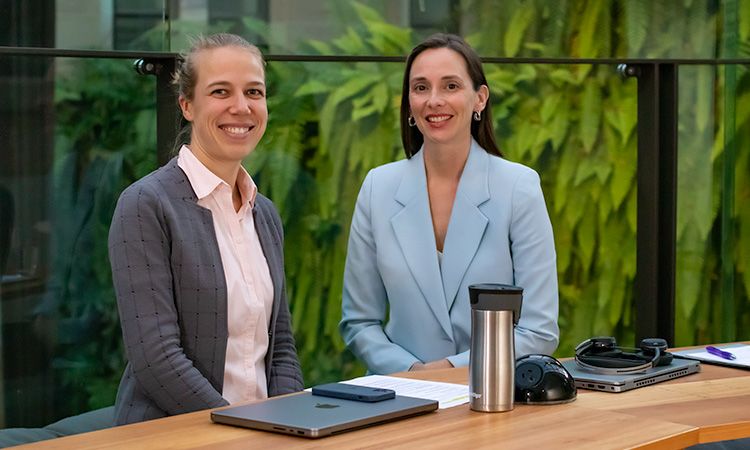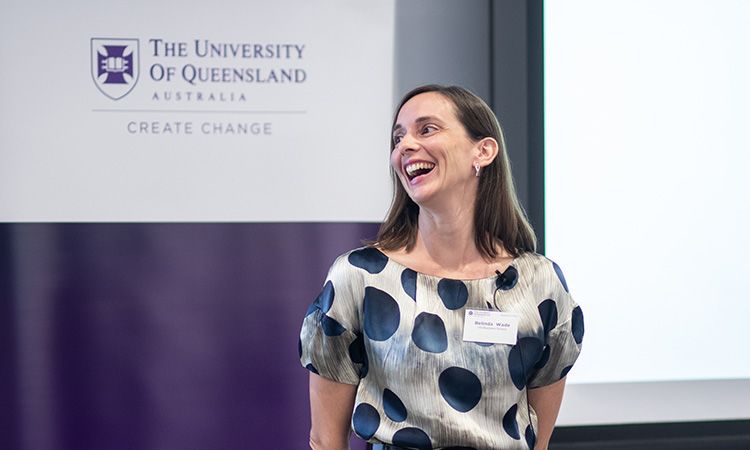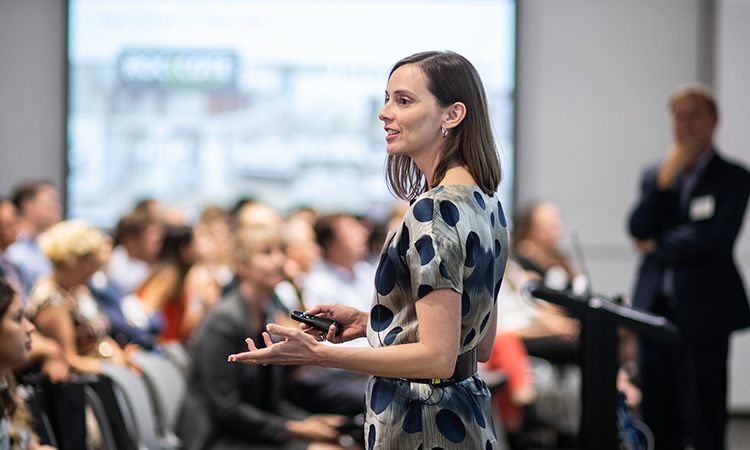Wishful thinking
How businesses can avoid ‘greenwishing’ and create a meaningful net zero plan in 5 practical steps

Businesses today face a delicate balancing act.
On one side is financial growth – the expectation that a business will deliver a profit and return dividends to shareholders.
On the other side is environmental sustainability – the social responsibility of a business to invest equal time and effort into its ‘ecological budget’.
While both contribute to long-term corporate sustainability, many organisations feel especially compelled to set ambitious ‘green’ targets to meet growing societal pressure, enhanced ESG reporting and increasing decarbonisation regulations.
However, the unintended outcome of bold and underexamined sustainability and net zero targets is often wishful thinking rather than real results, contributing to an emerging trend known as ‘greenwishing’.
You might be familiar with the terms ‘greenwashing’, when organisations deliberately mislead or misuse environmental claims for financial gain, and also ‘greenhushing’, when businesses refuse to disclose their sustainability efforts.
Now, greenwishing has surfaced in the ESG lexicon as a new threat to strides made in sustainability. The term refers to companies unintentionally over-promising and underdelivering on their proposed sustainability and net zero targets due to financial, organisational, technological, or even cognitive barriers.
Professor Belinda Wade from The University of Queensland (UQ) Business School explained that organisational greenwishing occurs when symbolic actions are taken instead of substantial ones. These actions can undermine the confidence of consumers, investors, and stakeholders in a company’s sustainability efforts.
“Some companies are committing to overambitious net zero targets that they can’t realistically achieve, fuelled by an eager desire to do the right thing, but struggling to navigate confusing information and not understanding which pathways to take,” Professor Wade said.

Professor Belinda Wade from UQ Business School
Professor Belinda Wade from UQ Business School
“Failing to meet net zero obligations, whether intentional or accidental, can have serious repercussions beyond financial losses. It can damage a company’s reputation and expose it to legal risks.”
Recognising the complexity of issues such as this, the UQ Business School established the Net Zero Observatory (NZO) in early 2024. The NZO aims to support industry action and community support for rapid decarbonisation which includes helping companies navigate the often conflicting and confusing decarbonisation requirements.
Leveraging her extensive industry, consulting and academic experience in the corporate decarbonisation and climate transition space, Professor Wade’s current research supports corporate decarbonisation relating to strategic management and reporting.
“Companies partnering with NZO support Australia’s climate transition and also benefit from access to cutting-edge research on these real-time issues,” Professor Wade said.
“The NZO research has practical implications that shape best practices directly relevant to organisations.”
So, how can businesses avoid greenwishing as they strive to reach net zero?
Professor Wade recommends following the Australian Securities & Investments Commission (ASIC) principles of transparency, accountability, and consistency to better comply with regulatory changes.
She shares 5 crucial strategies to create a research-backed net zero plan to balance a business’s ecological budget.

Professor Belinda Wade from The University of Queensland (UQ) Business School explained that organisational greenwishing occurs when symbolic actions are taken instead of substantial ones. These actions can undermine the confidence of consumers, investors, and stakeholders in a company’s sustainability efforts.
“Some companies are committing to overambitious net zero targets that they can’t realistically achieve, fuelled by an eager desire to do the right thing, but struggling to navigate confusing information and not understanding which pathways to take,” Professor Wade said.

Professor Belinda Wade from UQ Business School
Professor Belinda Wade from UQ Business School
“Failing to meet net zero obligations, whether intentional or accidental, can have serious repercussions beyond financial losses. It can damage a company’s reputation and expose it to legal risks.”
Recognising the complexity of issues such as this, the UQ Business School established the Net Zero Observatory (NZO) in early 2024. The NZO aims to support industry action and community support for rapid decarbonisation which includes helping companies navigate the often conflicting and confusing decarbonisation requirements.
Leveraging her extensive industry, consulting and academic experience in the corporate decarbonisation and climate transition space, Professor Wade’s current research supports corporate decarbonisation relating to strategic management and reporting.
“Companies partnering with NZO support Australia’s climate transition and also benefit from access to cutting-edge research on these real-time issues,” Professor Wade said.
“The NZO research has practical implications that shape best practices directly relevant to organisations.”
So, how can businesses avoid greenwishing as they strive to reach net zero?
Professor Wade recommends following the Australian Securities & Investments Commission (ASIC) principles of transparency, accountability, and consistency to better comply with regulatory changes.
She shares 5 crucial strategies to create a research-backed net zero plan to balance a business’s ecological budget.


Dr Saphira Rekker and Professor Belinda Wade from UQ Business School
Dr Saphira Rekker and Professor Belinda Wade from UQ Business School

Dr Saphira Rekker and Professor Belinda Wade from UQ Business School
Dr Saphira Rekker and Professor Belinda Wade from UQ Business School
1. Set effective targets and choose a pathway
According to Professor Wade, it’s important to set a true science-based target along with short, medium and long-term goals to establish and track your company’s decarbonisation trajectory from the start.
“It’s not just about getting there, but the decarbonisation pathway you take, as this has direct implications for reaching our goal temperature limit,” Professor Wade said.
She advised being transparent about the methodology used to establish the target, clearly define whether direct (Scope 1) and indirect (Scope 2 and 3) emissions are covered, and to use resources such as those provided by the Australian Government Clean Energy Regulator.
UQ Business School’s Dr Saphira Rekker – an Assistant Professor in Sustainable Finance – said a meaningful science-based target would track cumulative emissions and ensure correct calculations.
As the lead researcher on the Are you Paris Compliant? project, Dr Rekker’s research evaluates and tracks the climate performance of companies to help them better align with the Paris Agreement targets and pathways set in 2015.
“Created in conjunction with Oxford and Princeton Universities, our Paris Compliant Pathways (PCP) framework standardises and provides transparency around science-based targets. The framework focuses on evaluating corporate performance and actions to allow for more informed decision-making,” Dr Rekker said.
“The first condition of the PCP framework is that the company’s trajectory aligns with an underlying decarbonisation pathway that limits global warming to below 2°C, as per the Paris Agreement.
“The second condition is that the base year or target starting point is also consistent with that of the underlying decarbonisation pathway, ideally 2015 or earlier, to align with the year the Paris Agreement was signed.”
Dr Rekker said establishing the correct base year was critical to ensure comparisons are accurate and ambitions aren’t continually delayed.
“For example, if an organisation set a start baseline in 2023, but another company started a decarbonisation pathway in 2015, the first organisation is ignoring 8 years of emissions,” she said
“If we keep kicking the can forward to 2025, then we’re ignoring the action deficit or inaction before this base year, which is an issue.
“This sort of discrepancy allows organisations to make commitments that don’t reflect what their carbon budget should be to achieve the Paris goals and ignores their actions since the global agreement was signed in 2015.
“There’s no ‘one-size-fits-all’ Paris Compliant Pathway – there are different methods to get there – but it’s important to be transparent about the underlying implications of each pathway.
“For instance, a pathway relying highly on continued fossil fuel use requires large amounts of carbon capture and storage, and large carbon removals in the second half of the century.
“Stakeholders want to know about company climate impact, and we need an accurate method to track progress; otherwise, we’ll fail to meet global carbon budgets.”
Read: Why a lot of companies aren’t on track to meet net zero by 2050
1. Set effective targets and choose a pathway
According to Professor Wade, it’s important to set a true science-based target along with short, medium and long-term goals to establish and track your company’s decarbonisation trajectory from the start.
“It’s not just about getting there, but the decarbonisation pathway you take, as this has direct implications for reaching our goal temperature limit,” Professor Wade said.
She advised being transparent about the methodology used to establish the target, clearly define whether direct (Scope 1) and indirect (Scope 2 and 3) emissions are covered, and to use resources such as those provided by the Australian Government Clean Energy Regulator.
UQ Business School’s Dr Saphira Rekker – an Assistant Professor in Sustainable Finance – said a meaningful science-based target would track cumulative emissions and ensure correct calculations.
As the lead researcher on the Are you Paris Compliant? project, Dr Rekker’s research evaluates and tracks the climate performance of companies to help them better align with the Paris Agreement targets and pathways set in 2015.
“Created in conjunction with Oxford and Princeton Universities, our Paris Compliant Pathways (PCP) framework standardises and provides transparency around science-based targets. The framework focuses on evaluating corporate performance and actions to allow for more informed decision-making,” Dr Rekker said.

Dr Saphira Rekker and Professor Belinda Wade from UQ Business School
Dr Saphira Rekker and Professor Belinda Wade from UQ Business School
“The first condition of the PCP framework is that the company’s trajectory aligns with an underlying decarbonisation pathway that limits global warming to below 2°C, as per the Paris Agreement.
“The second condition is that the base year or target starting point is also consistent with that of the underlying decarbonisation pathway, ideally 2015 or earlier, to align with the year the Paris Agreement was signed.”
Dr Rekker said establishing the correct base year was critical to ensure comparisons are accurate and ambitions aren’t continually delayed.
“For example, if an organisation set a start baseline in 2023, but another company started a decarbonisation pathway in 2015, the first organisation is ignoring 8 years of emissions,” she said
“If we keep kicking the can forward to 2025, then we’re ignoring the action deficit or inaction before this base year, which is an issue.
“This sort of discrepancy allows organisations to make commitments that don’t reflect what their carbon budget should be to achieve the Paris goals and ignores their actions since the global agreement was signed in 2015.
“There’s no ‘one-size-fits-all’ Paris Compliant Pathway – there are different methods to get there – but it’s important to be transparent about the underlying implications of each pathway.
“For instance, a pathway relying highly on continued fossil fuel use requires large amounts of carbon capture and storage, and large carbon removals in the second half of the century.
“Stakeholders want to know about company climate impact, and we need an accurate method to track progress; otherwise, we’ll fail to meet global carbon budgets.”
Read: Why a lot of companies aren’t on track to meet net zero by 2050
2. Assess the impacts
After setting a short, medium and long-term target and establishing a true base year commitment, the next focus should be understanding the impacts on the entire business.
“Make a rigorous assessment of the impacts to achieve this target, examining the entire value chain for the risks and opportunities associated with the transition to net zero,” Professor Wade said.
When it comes to assessing impacts of climate change, risks can arise through both physical and transitional impacts. Climate change is already occurring, and even in a best-case scenario, we will continue to experience further physical climate change impacts.
An impact assessment needs to consider the acute and long-term physical impacts of climate change, as well as transition risks relating to market, reputation, technology and policy/legal changes.
“This thorough impact assessment stage will form the basis of climate transition plans,” Professor Wade said.
The Net Zero Observatory can help organisations assess their impacts and navigate the best pathway by drawing on a rapidly evolving frontier of research.
NZO uses existing scenarios, studies and analysis to design scalable and actionable interventions to help devise a clear Paris Compliant Pathway with a meaningful base year. They work with businesses for a true holistic assessment of their plan.

2. Assess the impacts
After setting a short, medium and long-term target and establishing a true base year commitment, the next focus should be understanding the impacts on the entire business.
“Make a rigorous assessment of the impacts to achieve this target, examining the entire value chain for the risks and opportunities associated with the transition to net zero,” Professor Wade said.
When it comes to assessing impacts of climate change, risks can arise through both physical and transitional impacts. Climate change is already occurring, and even in a best-case scenario, we will continue to experience further physical climate change impacts.
An impact assessment needs to consider the acute and long-term physical impacts of climate change, as well as transition risks relating to market, reputation, technology and policy/legal changes.
“This thorough impact assessment stage will form the basis of climate transition plans,” Professor Wade said.
The Net Zero Observatory can help organisations assess their impacts and navigate the best pathway by drawing on a rapidly evolving frontier of research.
NZO uses existing scenarios, studies and analysis to design scalable and actionable interventions to help devise a clear Paris Compliant Pathway with a meaningful base year. They work with businesses for a true holistic assessment of their plan.

3. Methodically plan the climate transition
As the rapid growth of new regulations can challenge compliance, climate transition planning is vital to avoid greenwishing and achieve net zero in line with set targets.
“When I look at net zero commitments and how companies have set these targets, I can see a quality continuum from genuine well-planned commitments through to greenwishing and greenwashing at the other end of the spectrum,” Professor Wade said.
“Avoid setting unrealistic net zero goals by ensuring any assertions are based in truth and show the transparency behind your sustainability targets.
“Planning needs to be methodical and developed with an operational lens in mind so it can be applied throughout all areas of the climate transition process.
“A failure to fully integrate your climate transition plan may prove costly in the long run and jeopardise your company’s net zero progress.”
4. Integrate the climate transition plan holistically to get buy-in
Implementing a climate transition plan impacts all departments and sectors of an organisation, from human resources to marketing, accounting and strategy. A climate transition plan also requires support from appropriate governance processes.
“Organisations need a structured and integrated plan that is communicated to internal and external stakeholders to act effectively on targets to reduce emissions,” Professor Wade said.
“It also requires thinking beyond the immediate prioritisation of emissions reduction to prepare companies to adapt and thrive in a climate-transitioned economy.”
Without buy-in from all levels of your organisation, the decarbonisation pathway may encounter roadblocks jeopardising corporate climate targets and the transition more broadly.
“C-suite endorsement is crucial,” Professor Wade cautioned.
“At NZO, we focus on climate change executive engagement, education and training so we can start to break down cognitive barriers and assumptions which may impact the company’s ability to realise their climate transition plan.”
Effectively influence across your business with a Master of Business Administration (MBA)

Professor Belinda Wade at a UQ Business School event
Professor Belinda Wade at a UQ Business School event

Professor Belinda Wade at a UQ Business School event
Professor Belinda Wade at a UQ Business School event
3. Methodically plan the climate transition
As the rapid growth of new regulations can challenge compliance, climate transition planning is vital to avoid greenwishing and achieve net zero in line with set targets.
“When I look at net zero commitments and how companies have set these targets, I can see a quality continuum from genuine well-planned commitments through to greenwishing and greenwashing at the other end of the spectrum,” Professor Wade said.

Professor Belinda Wade at a UQ Business School event
Professor Belinda Wade at a UQ Business School event
“Avoid setting unrealistic net zero goals by ensuring any assertions are based in truth and show the transparency behind your sustainability targets.
“Planning needs to be methodical and developed with an operational lens in mind so it can be applied throughout all areas of the climate transition process.
“A failure to fully integrate your climate transition plan may prove costly in the long run and jeopardise your company’s net zero progress.”
4. Integrate the climate transition plan holistically to get buy-in
Implementing a climate transition plan impacts all departments and sectors of an organisation, from human resources to marketing, accounting and strategy. A climate transition plan also requires support from appropriate governance processes.
“Organisations need a structured and integrated plan that is communicated to internal and external stakeholders to act effectively on targets to reduce emissions,” Professor Wade said.
“It also requires thinking beyond the immediate prioritisation of emissions reduction to prepare companies to adapt and thrive in a climate-transitioned economy.”
Without buy-in from all levels of your organisation, the decarbonisation pathway may encounter roadblocks jeopardising corporate climate targets and the transition more broadly.
“C-suite endorsement is crucial,” Professor Wade cautioned.
“At NZO, we focus on climate change executive engagement, education and training so we can start to break down cognitive barriers and assumptions which may impact the company’s ability to realise their climate transition plan.”
Effectively influence across your business with a Master of Business Administration (MBA)
5. Track the progress
“Companies need to employ a robust methodology to track their progress to net zero. Report on progress monthly, quarterly, and annually and address any deficits in action,” Professor Wade said.
“We essentially look at the emissions budget that the company can use. What does that mean in terms of cumulative emissions, and how do they need to progress in their decarbonisation to stay within that budget?
“It’s like any budget – if you overspend one month, you need to make up for any losses in the next month to stay on track with your climate budget.”
The recent introduction of the International Financial Reporting Standards climate-related disclosure (IFRS S2) provides a comprehensive global baseline for climate risk reporting, which Professor Wade said was a significant step towards transparency.
Dr Rekker said the interdisciplinary NZO project assesses companies’ actions against the Intergovernmental Panel on Climate Change (IPCC) climate models and PCP framework, then develops global tools to share the results publicly and transparently.
“Climate transition plans are often non-specific, so through research, we aim to assess these plans, map future emissions, and then benchmark them,” Dr Rekker said.
“The goal is to deter misleading corporate climate pledges and systematise the assessment of companies’ climate performance using a science-based approach.
“This will boost climate action by outlining meaningful and effective decarbonisation pathways that allow all stakeholders and investors to make climate-safe decisions.”

5. Track the progress
“Companies need to employ a robust methodology to track their progress to net zero. Report on progress monthly, quarterly, and annually and address any deficits in action,” Professor Wade said.
“We essentially look at the emissions budget that the company can use. What does that mean in terms of cumulative emissions, and how do they need to progress in their decarbonisation to stay within that budget?
“It’s like any budget – if you overspend one month, you need to make up for any losses in the next month to stay on track with your climate budget.”
The recent introduction of the International Financial Reporting Standards climate-related disclosure (IFRS S2) provides a comprehensive global baseline for climate risk reporting, which Professor Wade said was a significant step towards transparency.
Dr Rekker said the interdisciplinary NZO project assesses companies’ actions against the Intergovernmental Panel on Climate Change (IPCC) climate models and PCP framework, then develops global tools to share the results publicly and transparently.
“Climate transition plans are often non-specific, so through research, we aim to assess these plans, map future emissions, and then benchmark them,” Dr Rekker said.
“The goal is to deter misleading corporate climate pledges and systematise the assessment of companies’ climate performance using a science-based approach.
“This will boost climate action by outlining meaningful and effective decarbonisation pathways that allow all stakeholders and investors to make climate-safe decisions.”

Discover how the Net Zero Observatory can guide your organisation’s net zero journey
Find out more

Professor Belinda Wade is an Industry Professor at UQ Business School and a co-leader of the Net Zero Observatory. Belinda's research promotes organisational progress on climate and sustainability issues with a focus on decarbonisation and organisational climate transitions.

Dr Saphira Rekker is a leading global expert in sustainable finance at UQ Business School and a key researcher of the Net Zero Observatory. She’s a world-leading scholar in the field of corporate Paris Compliance measurement and is an internationally recognised academic involved in developing science-based emission reduction methodologies working with industry partners including Norges Bank.

The University of Queensland (UQ) acknowledges the Traditional Owners and their custodianship of the lands on which UQ operates. We pay our respects to their Ancestors and their descendants, who continue cultural and spiritual connections to Country. We recognise their valuable contributions to Australian and global society.
